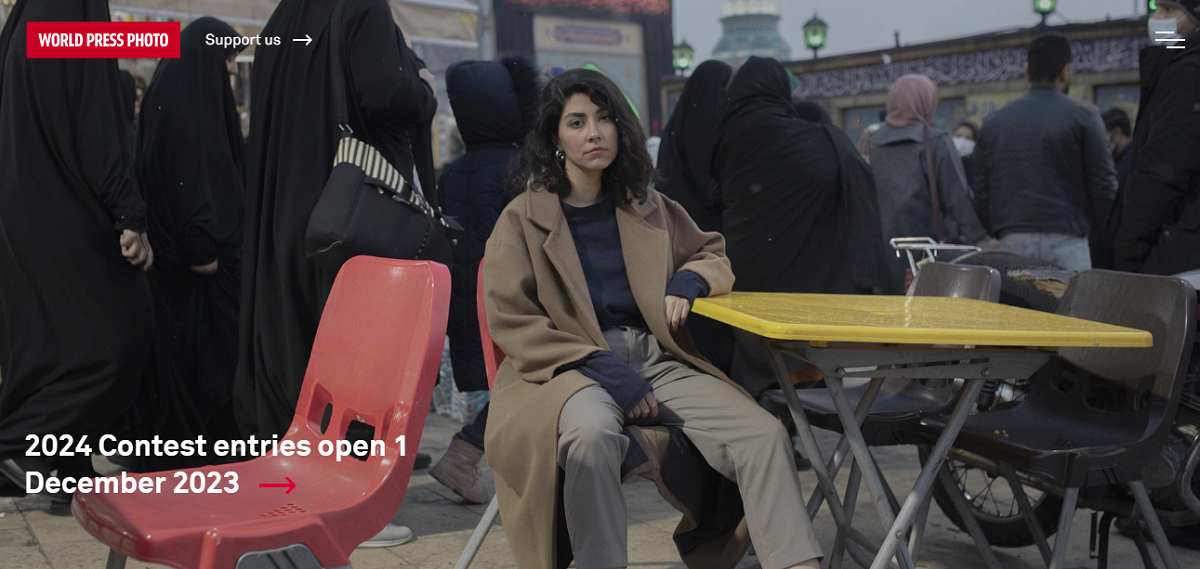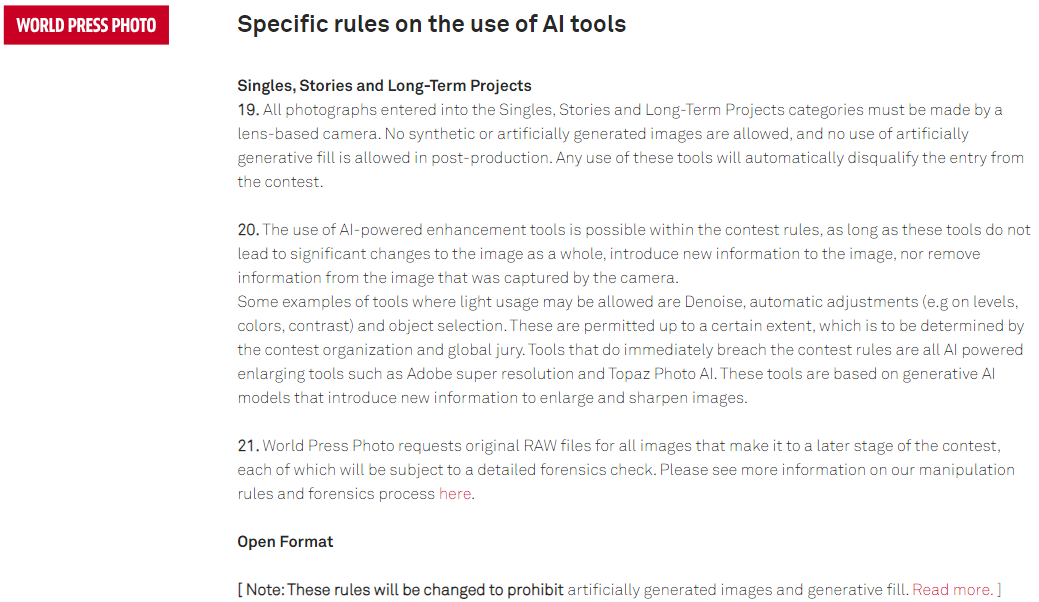
The World Press Photo organization has backtracked on its strange decision to let a press photography contest include AI-generated images.
Why an organization specifically dedicated to promoting photography taken of news-worthy real-world situations thought it would be a good idea to let algorithm-rendered fiction be included in its main photo contest is hard to fathom, but that’s what it tried.
WPP then backpedaled after a massive and completely predictable backlash from numerous photojournalists, photographers and press photography professionals went viral.
Originally, World Press Photo intended to allow submissions for its World Press Photo award to include AI-rendered visuals under the contest’s “Open Format”.
This was what it formally announced in a blog post on the WPP website under the justification that the Open Format section is a category for non-traditional, innovative techniques and thus open to AI creations.
Shortly afterward, numerous photojournalists voiced their serious disagreement by signing an open letter published on the website Medium.
Hundreds of others also commented on their own anger through WPP’s Instagram page and other social media accounts.
Their arguments, though varied in many ways, almost uniformly agreed that the decision completely undermined the very point of their work and the entire press photography field.
As the letter explains in one section, “These images, which are in essence digital mashups drawing from existing photography, are often hard to distinguish from actual photographs, but are devoid of any connection to the real world,”
For an organization dedicated to promoting press photography, you’d think that would be an obvious point. Apparently, it wasn’t.
The letter further states the obvious “This connection to the real world, the world as it is, is at the core not only of photojournalistic practice, but of journalism in general.”
To further bolster its PR for the original decision, the WPP had posted several AI images on its Instagram feed last week and asked if such imagery “could win in the World Press Photo Contest?”
One Pulitzer-winning photographer, Daniel Etter spat back “You just made my WPP award feel like a worthless piece of metal,” He further underscored his anger, “This shows a complete lack of respect for the work we do, the risks we take, and the reasons why we do it.”
You can probably imagine the vast majority of other reader/follower responses.
Apparently, somebody at the WPP finally used a few extra neurons to realize that given their fundamental mission in the photography world, the entire AI declaration was probably the wrong choice in the wrong context.
In any case, as of earlier this week, the organization announced that it would exclude AI images after all.
The WPP now affirms, “Both generative fill and fully generated images will be prohibited in the Open Format category (as was already the case in the other categories: Singles, Stories, and Long-Term Projects),”
They also add “This is in line with our long-standing values of accuracy and trustworthiness.”
This of course makes you wonder: if not allowing literally false AI renderings fits their long-standing values of accuracy and trustworthiness, did they somehow forget that AI images aren’t real when they first decided to allow them?
The sheer strangeness of the original decision for this particular organization and the contradictory about-face almost makes one suspect that the whole thing was an intentional, publicity-driven viral outrage stunt right from the start.

That’s just speculation of course, but in a world where press photography is now under threat from the possibility of AI deepfakes, an organization like the WPP would presumably be conscious of the problems with promoting AI images in a press photo contest of all things.
In a seeming act of contrition, the WPP has now teamed up with Magnum Photo and others to define what a photograph is in today’s world of AI photorealism.
The results of this effort have been titled “Writing with Light: Ethical Standards for Visual Journalism in the Age of AI” You can read more about their conclusions here.
Going further, the WPP has also taken the time to update its rules for image manipulation of submissions with a “lens-based camera.” (as opposed to an imaginary AI “camera”?)
The organization’s stated regulations now specifically allow for adjustments to things like color, contrast, levels and noise. However, AI tools for sharpening and modifying photos are forbidden.
Highly Recommended

Check out these 8 essential tools to help you succeed as a professional photographer.
Includes limited-time discounts.
Learn more here
Credit : Source Post



